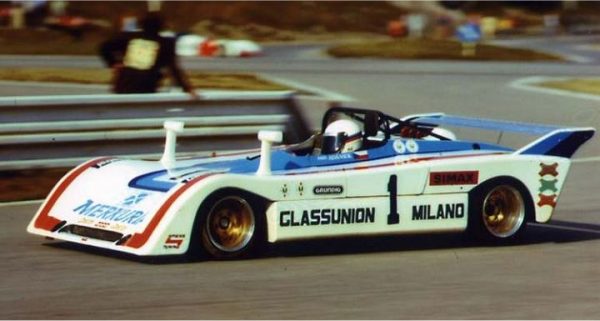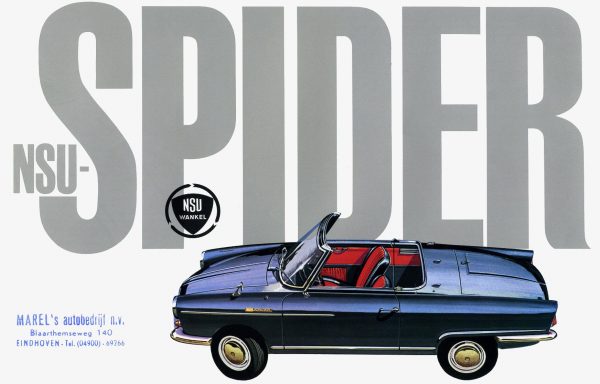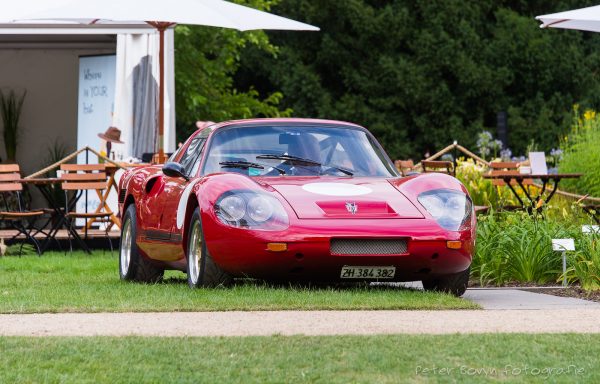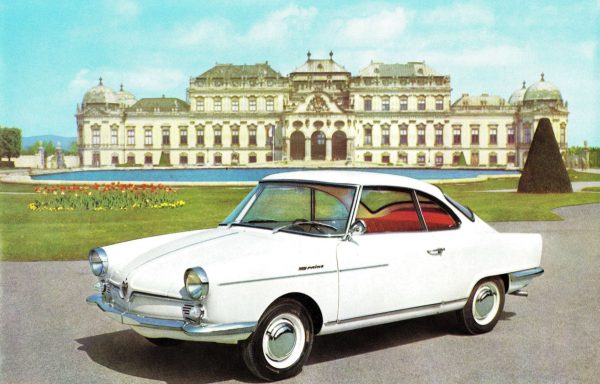The NSU Brixner, created by the German tuner Willy Brixner, holds a special place in the world of modified vehicles, particularly in racing circles. While NSU was renowned for its small, lightweight cars with innovative engineering, Willy Brixner saw even greater potential for high performance and racing.
Historical Background
The NSU company, particularly known for its small-displacement motorcycles and vehicles, gained recognition in the 1950s and 60s for its advanced technology and robust design, especially with models like the NSU Prinz, TT, and TTS. These vehicles were nimble, durable, and well-suited to the demands of racing, but Willy Brixner saw room for enhancement. With a focus on maximizing NSU’s power and handling capabilities, Brixner set out to transform these models into true racing machines.
Brixner’s modifications primarily targeted models based on the NSU Prinz platform, especially the NSU TT and TTS. These cars were already celebrated for their compact yet potent engines and responsive handling, making them ideal candidates for further performance tuning. Brixner’s customizations expanded NSU’s influence in competitive racing circuits, allowing the brand to compete with larger manufacturers’ vehicles on an international stage.
Technical Enhancements and Modifications
The technical modifications Brixner applied to NSU models were extensive, especially for racing purposes. Here’s a breakdown of the typical enhancements he made:
- Engine Modifications:
- Displacement: Many Brixner-modified NSUs used enlarged displacement engines to increase horsepower, particularly focusing on the air-cooled, four-cylinder engines in the NSU TT and TTS.
- Compression Ratio: Brixner often modified the compression ratio to achieve higher performance, though the specific figures varied depending on the exact tuning needed for specific races.
- Power Output: The original NSU TT could produce around 65 hp, while the TTS could reach around 70-85 hp. Brixner’s modifications pushed these numbers significantly higher, with some engines reportedly reaching well over 100 hp—a significant achievement for such a small vehicle.
- RPM Optimization: The engines were tuned to operate at higher RPMs, optimizing the output for racing scenarios and giving Brixner’s NSUs a competitive edge on the track.
- Exhaust and Intake Systems:
- High-Performance Carburetors: Brixner often replaced the stock carburetors with higher-performance versions to increase the air-fuel mixture flow, improving combustion efficiency.
- Custom Exhausts: To reduce backpressure and increase power output, he fitted these cars with custom exhaust systems, which also gave them a distinctive and aggressive sound.
- Transmission:
- Brixner adjusted or completely upgraded the transmission systems for better durability and responsiveness. These enhancements were crucial to handle the increased engine output without risking gearbox failure during high-stress racing conditions.
- Suspension and Chassis Tuning:
- Reinforced Chassis: Racing required a stiffer, more durable body to withstand high speeds and cornering forces. Brixner typically reinforced the chassis to provide greater structural integrity.
- Suspension Upgrades: Modifications to the suspension system allowed for better handling and stability. This included stiffer springs, better shock absorbers, and custom tuning to optimize performance on race tracks.
- Lowered Stance: By lowering the car’s height, Brixner achieved a lower center of gravity, reducing body roll and improving handling, especially in sharp turns.
- Lightweight Components:
- Brixner replaced parts of the body with lightweight materials where possible to reduce the overall weight. These modifications included lighter wheels, removal of non-essential interior components, and, in some cases, use of lightweight panels for the car’s exterior.
- Aerodynamic Adjustments:
- Though NSU cars were generally compact, Brixner made aerodynamic adjustments, such as adding spoilers and modified body panels, to reduce drag and increase downforce—especially crucial in racing.
Performance and Racing Success
Brixner’s NSU cars quickly proved their worth on the track, competing in various touring car races across Europe. The enhanced power, lighter weight, and improved handling allowed them to keep pace with and often outperform much larger vehicles. NSU’s reputation grew further as these modified cars consistently performed well, particularly in hill-climb events, rallying, and circuit races, where agility and handling were paramount.
In Germany, the Brixner-modified NSUs became icons in motorsport, showing that compact, well-engineered cars could compete with—and often beat—larger, more powerful vehicles. They became especially popular in grassroots racing circuits, where they provided an affordable and high-performance entry point for amateur and semi-professional racers.
Technical Specifications Snapshot for a Typical Brixner NSU Tuning
While exact specifications varied depending on the car and tuning requirements, a typical Brixner-modified NSU TTS might have specs close to these:
- Displacement: Around 1,200 cc (compared to the standard 1,000 cc of the TTS)
- Compression Ratio: Approximately 10:1 (up from the stock ratio)
- HP Output: 100-110 hp at around 6,500-7,000 rpm
- Torque Output: Approximately 12-13 kg/m at 5,500 rpm
- Transmission: Modified 4-speed manual transmission
- Weight: 600-700 kg (depending on modifications)
- 0-100 km/h: Around 7-8 seconds
- Top Speed: 170-180 km/h (significantly higher than the standard TTS)
Legacy and Influence
The legacy of the Brixner NSUs is still alive today, with collectors and racing enthusiasts valuing these vehicles for their history and engineering. Brixner’s work demonstrated that, with the right modifications, small cars could challenge the traditional powerhouses in motorsports. His influence extends to the world of tuning and custom car modification, as many of his techniques and modifications are still respected and emulated in small car racing circuits around the world.
For NSU enthusiasts, a Brixner-modified car remains a rare and highly prized collector’s item, symbolizing the peak of NSU’s racing capabilities and the spirit of grassroots motorsports in Germany.




